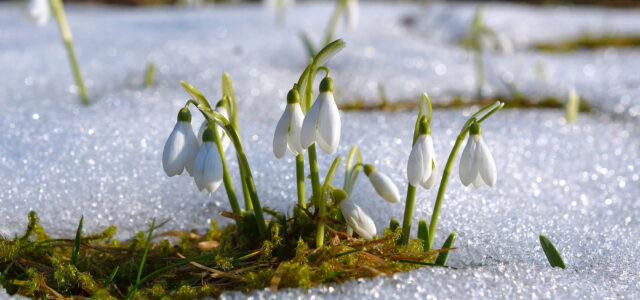
Preparing For Spring
February can be one of the coldest months of the year, even though it is full of the promise of spring with bulb shoots pushing through and song birds being heard
There is still plenty to do in the garden now in preparations for the months ahead – winter maintenance continues and there is gentle pruning and cutting back of shrubs and hedges to do. Make sure when cutting back that you don’t disturb wildlife that will still be hibernating.
If you want to know what to do with your prunings then one simple solution is to create a ‘twiggery’ – a twiggy habitat tucked away in a quiet spot at the end of the garden or allotment or under a hedge. Cut prunings into lengths of one to two metres and make a low pile in a shady place. Small mammals will use this and hedgehogs may even nest there. Birds that don’t mind nesting close to the ground such as blackbirds and dunnocks may also use it as a nest site.
You can also think about giving a bird a home during National Nest Box Week, which runs for a week from 14th February, by simply putting up a bird nest box in your garden. As our gardens and parklands become tidier, natural nest sites are rapidly disappearing. Caring for our feathered friends by feeding, providing water and putting up nest boxes, to give them a safe space to raise chicks, has never been more important. You can find out where to put up a nest box and which kind to put up at nestboxweek.com.
Attracting insects into your garden for birds and to pollinate plants is also important. A good pollinator plant for February flowering is Pussy Willow (Salix caprea). This native deciduous tree prefers deep soils that don’t dry out and has broader leaves than most willows. In late winter, it produces furry catkins that not only contain nectar but also accessible pollen that turns the male catkins from silvery-grey to bright yellow and attracts big queen bumblebees and several species of solitary bees.
WHAT THE EXPERTS SAY
This month there are signs of the approaching spring, with bulbs appearing and wildlife waking up as light levels and temperatures increase. There’s plenty to do indoors this month to prepare for the season ahead. Outdoors, as the garden comes to life again, it’s time to prune shrubs and climbers, such as Wisteria as well as evergreen hedges.
RHS
The shortest month of the year, February marks the final month of the winter season and heralds the dawning of spring. It can also start to feel noticeably lighter each day which is always a boost after shorter daylight hours. This extra light makes heading for walks to spot wildlife such as beautiful waxwing birds or common spawning frogs a little easier, as nature stirs after its winter hibernation.
BBC Countryfile

